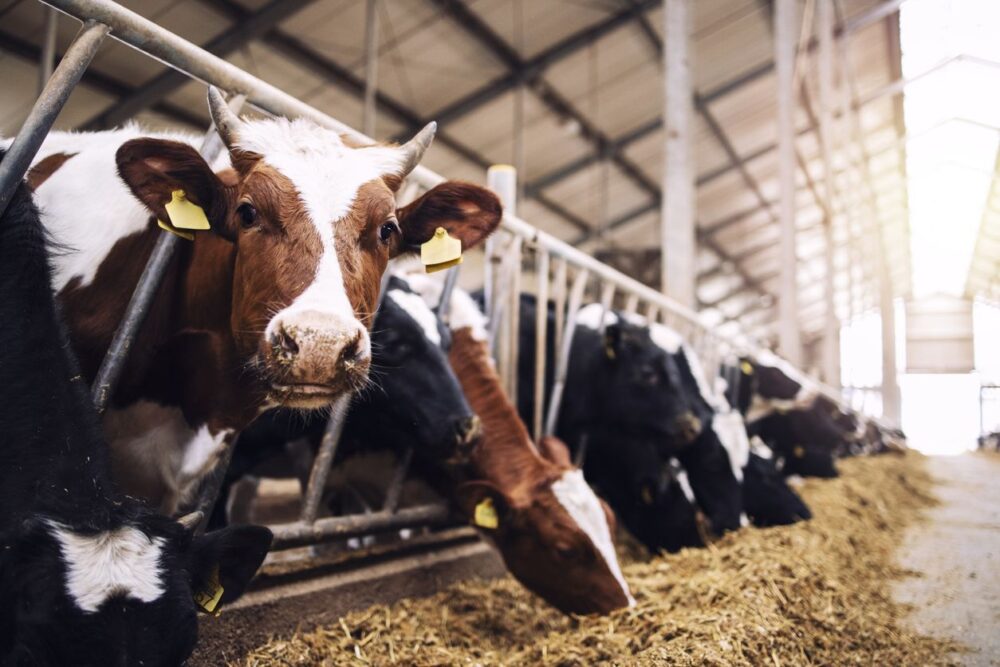- Disclosed emissions for 20 of the world’s largest meat and dairy producers have risen 3.28% year-on-year according to new data from the Coller FAIRR Protein Producer Index.
- Investor network FAIRR‘s analysis includes Hormel Foods, McDonald’s, Walmart and many other high-profile names.
- While some of the firms analyzed by FAIRR disclosed falling emissions — notably Tyson Foods and Danone — the index notes that their progress “was negated by rises from other meat and dairy giants.”
- The 60 companies listed in the annual Coller FAIRR Protein Producer index supply the world’s biggest food retailers.

‘Extremely disappointing’
Jeremy Coller, FAIRR’s founder and chair, noted in the analysis that the animal protein industry’s rising emissions were “extremely disappointing”:
“Perhaps worst of all, those responsible aren’t just rogue outliers: companies that supply household names like McDonald’s and Walmart have contributed to an increase of almost 3% in absolute reported emissions over the past 12 months,” he wrote.
“The failure of leading meat and dairy companies to reduce emissions underlines the urgent need for more policy focus on the food and agriculture sector.”
45% of companies ‘high risk’
The index assesses companies against environmental, social and governance (ESG) factors aligned with the United Nations Sustainable Development Goals. These include greenhouse gas emissions, deforestation, pollution, animal welfare, and greenwashing.
The higher a company scores, the closer it gets to the Best Practice rating in FAIRR’s analysis. Lowest-scoring companies land in the High Risk range.
For the 2023 index, 45% of the 60 animal protein producers analyzed were labeled High Risk. Beijing Sanyuan Foods scored the lowest and therefore ranked as the highest-risk firm.
Others in the High Risk category include animal feed company New Hope Liuhe, Cal-Maine Foods, and Seaboard Corporation.
FAIRR notes that despite this, the number of High Risk companies decreased for the first time ever, dropping from 55% in 2022.
“This is a testament to the Index’s impact in encouraging companies to prioritize sustainability and adopt measures to address identified risks,” notes the analysis.
The good news
On the other end of the spectrum, seafood producers Mowi, Lerøy Seafood Group and Greig Seafood scored the highest, landing in the Low Risk category.
Danone, Maple Leaf Foods, Tyson and JBS were among the companies rated as Medium Risk.
FAIRR’s analysis notes that while “no company has yet achieved a Best Practice score” across all of these risk factors, more companies are securing a Low Risk rating across multiple factors.”
Within individual risk factors, FAIRR notes that the largest improvements were seen in alternative proteins, waste and pollution, and water use.
As in past years, aquaculture companies are outperforming land-based protein companies. The beef industry’s overall score rose 11%, which FAIRR attributes to “a rise in governance performance.”
At the same time, the beef industry recorded a decrease in score around working conditions “with many producers facing controversies around human capital management.”
The top quartile of companies assessed recorded improvements in every category for risk factors.
FAIRR noted that “the gap between the best-performing and worst-performing companies is still growing. The worst-performing companies made limited progress in all but one risk factor, but an overall improvement of 8% in their scores for working conditions is notable.”



